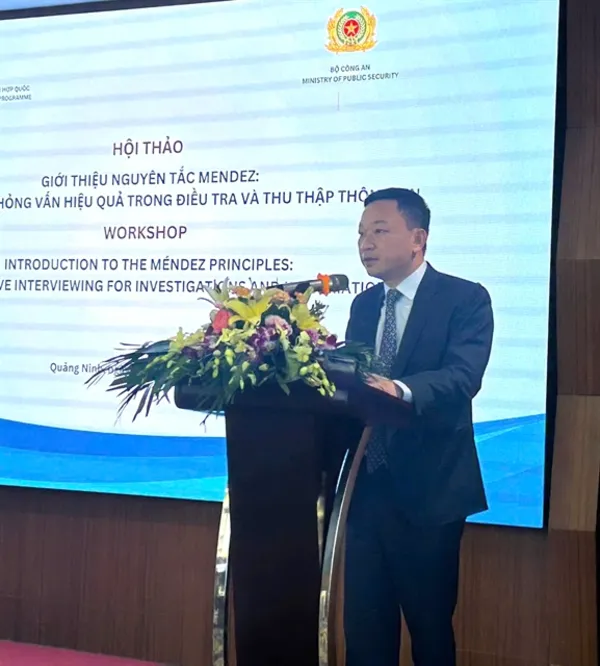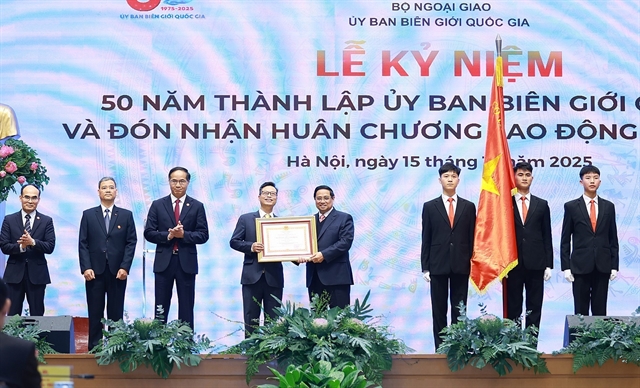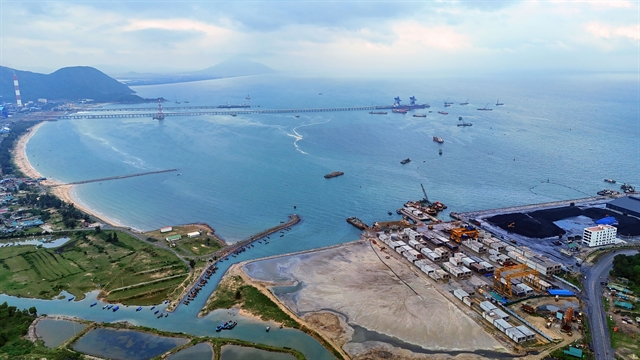 Opinion
Opinion

 |
| Containers loaded at Gemalink International Port. Ocean commerce is the fundamental platform connecting developing economies like Việt Nam to global supply chains and consumer markets. — VNA/VNS Photo Hồng Đạt |
Dr. Trần Thị Mai Thành*
Contemporary international trade is not merely an exchange of goods but a complex network involving logistics, customs procedures, and a wide array of legal regulations. In this context, trade facilitation has emerged as a pivotal factor determining the efficiency and cost of cross-border transactions. Particularly for ocean commerce – the lifeblood of global supply chains – the link between trade facilitation and maritime transport performance is critically important. The ASEAN region, with its strategic geographical location and vibrant trade network, serves as a clear testament to the impact of trade facilitation on maritime freight trade.
Trade Facilitation: Concept and Strategic Objectives
Trade Facilitation is understood as the simplification, modernisation, and harmonisation of procedures and processes related to the import, export, and transit of goods. The core objective of trade facilitation is to minimise the time and costs associated with administrative procedures while enhancing transparency and predictability in international trade. Its scope is broad, encompassing everything from standardising documents and applying information technology (such as national/ASEAN single window systems) to reforming customs procedures, risk management, and strengthening cooperation among border agencies. By reducing bureaucracy, eliminating unnecessary paperwork, and optimising processes, trade facilitation enables goods to move across borders more quickly and efficiently. This not only directly benefits businesses but also contributes to macro-economic growth by boosting competitiveness, attracting investment, and expanding markets.
Ocean Commerce: The Lifeblood of the Global Economy
Ocean commerce, or maritime transport, is the world's primary method for transporting goods, accounting for over 80 per cent of global trade by volume. The indispensable role of maritime transport stems from its capacity to move large volumes of cargo at low costs and its ability to reach nearly every country with a coastline. For nations dependent on imports and exports, especially developing economies like Việt Nam and other ASEAN countries, ocean commerce is the fundamental platform connecting them to global supply chains and consumer markets.
Maritime routes play a strategic role in shaping global geopolitics and economics. Modern seaports, bustling sea lanes, and efficient logistics corridors are essential elements for maintaining the smooth flow of trade. The development of ocean commerce has fueled globalisation, allowing businesses to manufacture in one location and sell their products across the globe, creating a tightly interconnected economic network.
The Correlation Between Trade Facilitation and Ocean Commerce
The relationship between trade facilitation and ocean commerce is symbiotic, with each element supporting and reinforcing the other's development. The efficiency of maritime transport heavily depends on customs and logistics procedures at ports.
Trade Facilitation and Ocean Commerce in the ASEAN Region
 |
| A view of Vũng Áng Port in Hà Tĩnh Province. Trade facilitation for ocean commerce is important to the ASEAN region, where over 70% of total trade value is transported by sea. — VNA/VNS Photo Hữu Quyết |
The ASEAN region, where over 70 per cent of total trade value is transported by sea, is a prime example of the importance of trade facilitation for ocean commerce. ASEAN countries have been actively implementing trade facilitation initiatives to enhance regional connectivity and economic integration, particularly through the implementation of the WTO's Trade Facilitation Agreement (TFA).
As of October 2024, many ASEAN nations had made significant progress in implementing the TFA. Specifically, Brunei, Indonesia, Malaysia, the Philippines, Singapore, and Thailand have substantially completed the full implementation of their commitments under this agreement. This reflects the region's collective effort to reduce transaction costs and time, simplify customs procedures, and minimise unnecessary trade barriers.
Another notable effort is the implementation of the ASEAN Single Window (ASW). The ASW enables the electronic exchange of customs clearance information among member states, helping to reduce time and costs for businesses, especially for procedures related to maritime imports and exports. The successful rollout of the ASW has significantly contributed to reducing non-tariff barriers and promoting the flow of goods and services within the bloc and with external partners.
However, challenges remain within the region. Some countries, such as Cambodia, Laos, Myanmar, and Việt Nam, are expected to achieve full TFA implementation between 2025 and 2028. Disparities in infrastructure development, technological capacity, and administrative processes among member states can sometimes slow the harmonisation process. A lack of synchronisation in port management and maritime logistics can also create bottlenecks. A scientific research report on the impact of trade facilitation on ocean freight trade in ASEAN indicated that, despite considerable progress, continued investment in digitalisation, capacity building for customs and logistics officials, and the promotion of cross-border cooperation are necessary to optimise the efficiency of maritime transport in the region.
Future Benefits and Challenges
Trade facilitation offers immense benefits for ocean commerce and the broader economy. It not only increases trade volumes and attracts foreign direct investment (FDI) but also enhances the competitiveness of businesses and nations on the international stage. Supply chains become more flexible and resilient, mitigating the impact of external shocks. Notably, simplified procedures make it easier for small and medium-sized enterprises (SMEs) to participate in global value chains, fostering inclusive development and opening up greater access to international markets.
Nevertheless, many challenges must be overcome. These include the complexity of international regulations, the lack of uniformity in legal systems and procedures between countries, and issues related to cybersecurity and data privacy in a digital environment. Securing sufficient investment for modern infrastructure and advanced technology also poses a significant financial burden for many developing nations. Furthermore, achieving effective coordination and cooperation among government agencies, businesses, and other stakeholders is not straightforward and requires sustained political commitment and persistent effort.
Trade facilitation and ocean commerce are two inseparable pillars of the global economy. In a context of deep integration, continuing to advance trade facilitation initiatives – particularly through digitalisation, automation, and process harmonisation – will be a powerful driver for the growth of maritime transport. For the ASEAN region and the world at large, overcoming existing challenges and fully capitalising on the opportunities from trade facilitation will be decisive for the future prosperity and sustainability of global supply chains. International cooperation, investment in technology, and steadfast political commitment are the keys to unlocking this vast potential, ensuring a smooth, secure, and efficient flow of trade that contributes to shared global development.
*Dr. Trần Thị Mai Thành is Vice Dean of the Faculty of International Business and Economics, Deputy Head of the Department of World Economics and International Economic Relations, VNU-University of Economics and Business




